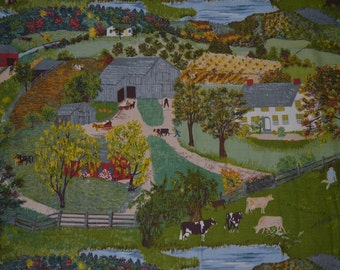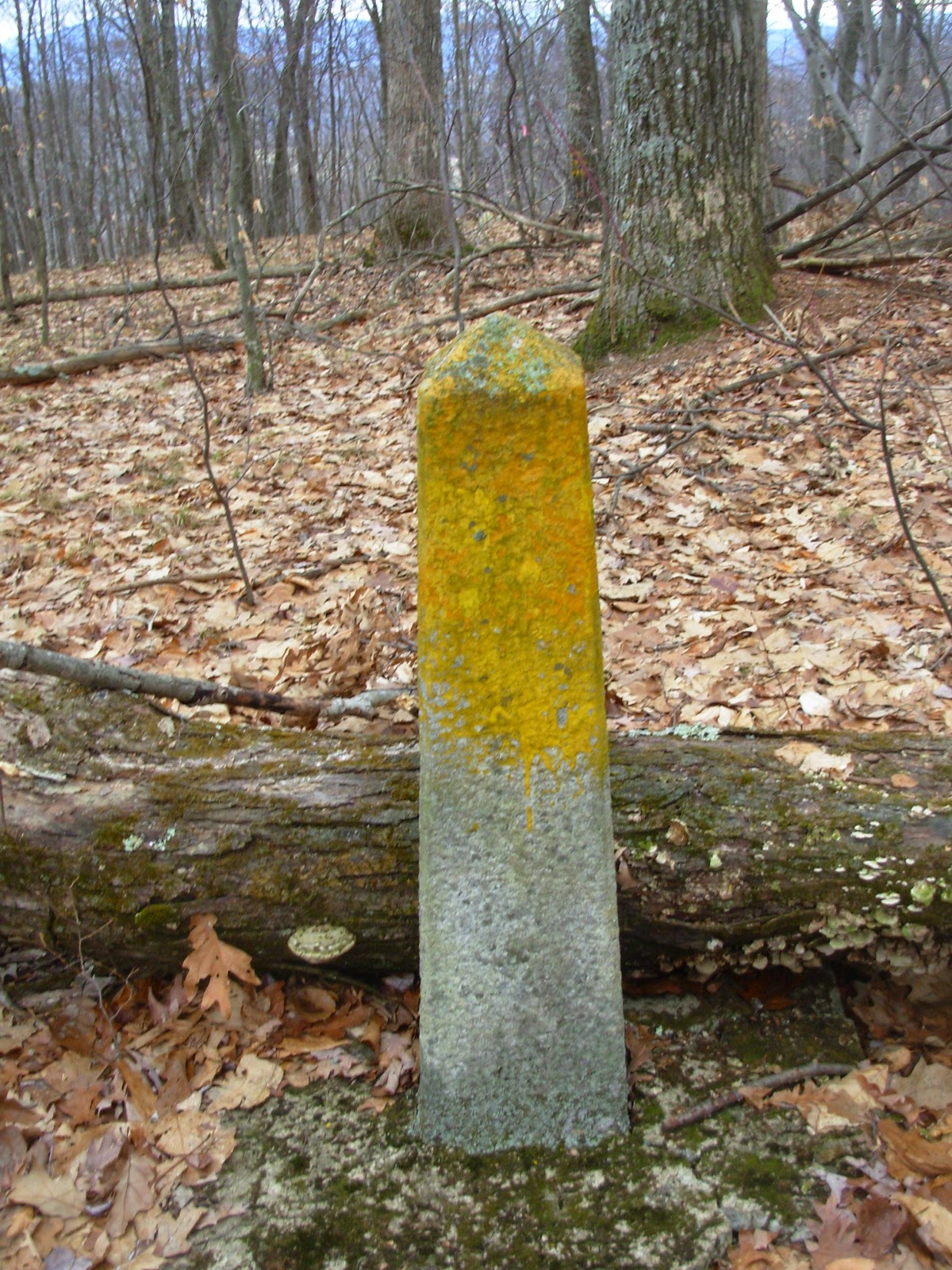We lost Grandma Moses fifty three years ago. Or did we? Certainly history tells us she died on December 13, 1961. But you never really lose someone so prolific, so possessed of such a life force and personal vision.
Anna Mary Robertson Moses was the famous painter of primitive scenes who was "discovered" when in her late seventies and lived to 101, productive her entire life. She lived in Eagle Bridge, far southern Washington County on a farm that's still in her family. From this pastoral spot she went on to worldwide fame for both her art and her homespun persona.
Wishing to reacquaint myself with this remarkable woman I took a scenic tour of Grandma Moses country recently. Hope you enjoy it here and better yet, go on your own sometime.
Little Anna Mary was born on a farm in Easton just outside of Greenwich. In a painting titled
Grandma Moses's Childhood Home we see a grist mill, barns and farmhouse backed by the ever present hills of Washington County. New York State has erected an historical marker on the west side of Co. 74A that is somewhat vague, while other sources point to a location on the east side of the road for her birthplace. I called Ed Skiff, who farms here, and he set the record straight. The Moses' homestead was between 74A and 74 on a small unnamed creek that flows down along Gillis Road, across his fields and into Fly Creek. It's not real close to any modern highways so it's not a drive-by historical site. Ed says there is still a small milldam and foundation stones but all the buildings are long gone.

Above are fabric copies of Grandma Moses's Childhood Home
Anna began working for neighbors at the age of 12. She married Thomas Moses in 1887 and they moved to a Virginia farm where their children were born (10 in all, 5 who survived infancy). In 1905 their house burned and they were homesick for Washington County so they bought a farm in Eagle Bridge where she lived the rest of her life (she did live in Bennington, Vermont for a few years caring for family and spent her last few months in a nursing home in Hoosick Falls).
The farm, called Mt. Nebo, is located just off Rt. 22 on (surprise!) Grandma Moses Road. The old farmhouse and adjoining red barns are recognizable from some of her paintings. You can stop and visit. Will Moses, Anna's great grandson and an accomplished folklife painter himself, has his Mt. Nebo gallery in one of the barns, up the driveway, beyond the beef cows. It is a charming country property as you can see in the photo and painting.
Grandma Moses Going to Big City
The rest of Grandma's farm continues as the Moses vegetable operation. Since Native American times this rich land along the Hoosic River has been highly prized. The property was recently protected thru an Agricultural Stewardship Association easement. Hopefully many more generations of Moses will farm here.
Hoosick Falls is located a few miles south of the Moses homestead in northern Rensselaer County. In 1938 Grandma had a few paintings on display at W.D. Thomas's drug store where Louis Caldor, an art collector, happened to see them. He contacted her and arranged for a New York City show. As they say, the rest is history.
The village is where Grandma died and is buried. You can visit her grave in Maple Grove Cemetery on the south side of town. Note the gorgeous view of the Hoosic Valley from her family's plot. It's a scene she might have painted. The inscription on her stone reads: "Her primitive paintings captured the spirit and preserved the scene of a vanishing countryside."
I finished my tour in Vermont, where I visited the Bennington Museum. This imposing white marble structure has the largest single collection of Moses paintings and it's also the home of Grandma's childhood schoolhouse.
In a gallery dedicated to her there are cases of memorabilia, the decorated tilt table where she worked and, of course, many paintings. While the patchwork landscapes of field and forest are soothingly familiar, what struck me was the activity - her scenes are full of busy animals and people at home in their world. In
White Creek kids are swimming in the meandering stream and the painting titled
Checkered House is alive with comings and goings. The checkered house was a famous landmark painted in a red and white pattern. It was located on Turnpike Road south of Cambridge. I had stopped at the site earlier in the day. The house is gone now but there is a roadside monument. Grandma used it as subject matter many times.
I felt a personal connection to
In Harvest Time, which shows men working in a field of ripe grain. I've been told my great grandfather brought the first reaping machine to Washington County and went from farm to farm with a crew doing custom harvesting. Looking at Grandma's scene I sensed a bond across the years. It's a feeling her art evokes in many people.
"I like to paint old timey things," - Grandma Moses. Of course, that's what we liked her to paint.
Her work was labeled primitive. Today it might be more charitably called folk art. I had been to the Clark Museum in Williamstown a week prior to viewing the Moses paintings at Bennington. Even to an art illiterate like myself, the differences between Grandma Moses and such masters as Monet, Renoir and Degas are obvious. But she had no formal training and never claimed to be an "artist". What matters is that her paintings are just so pleasing (dare I say comforting). Of course, part of the pleasure is simple nostalgia. But there's more to it than that.
When I wander the backroads of Washington County I keep seeing Grandma Moses pictures. She recorded what she saw and felt affection for (the "old timey things") but she also influenced what we see today. Could it be that people chose to live here because they fell in love with the landscapes she painted? And is it possible that they've built or restored their properties to look like her cheerily inviting farmyard scenes? How many artists both capture and help create the look of a place?
Inspired by Grandma?
Moses came close to becoming a cliché. She certainly looked the part of the gentle old lady, everyones iconic grandmother who liked pretty things. But one sensed a peppery steel behind the smiling face and delicate wire rimmed glasses. She had lived a long challenging life full of hard work and her share of heartbreak. Beneath the fragile facade was a strength born of the independence and struggle inherent in farm life. Her years saw the growth of corporations and large institutions intent on pushing their products, services, programs and beliefs. But consumption and homogenization aren't for everyone. Grandma Moses gave us a different model of living, one of creation and purpose. That way of living resonates in rural Washington County to this day.






































